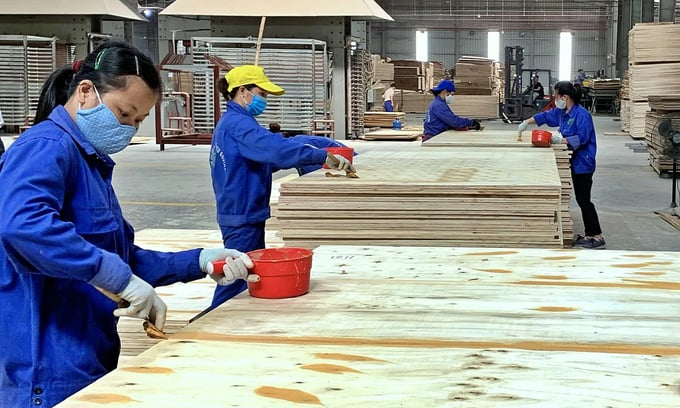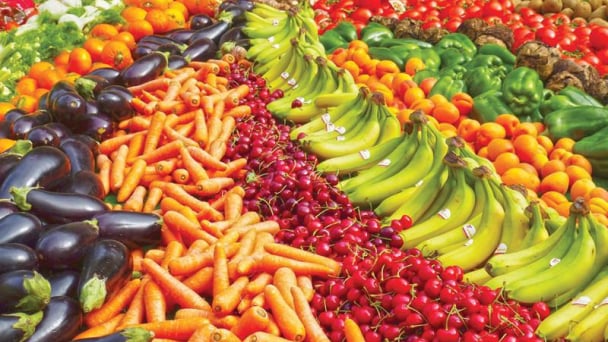May 20, 2025 | 09:14 GMT +7
May 20, 2025 | 09:14 GMT +7
Hotline: 0913.378.918
May 20, 2025 | 09:14 GMT +7
Hotline: 0913.378.918

Wood production at a company in Thanh Binh Industrial Park, Cho Moi district, Bac Kan province.
According to Vietnam Industry and Trade Information Center, Ministry of Industry and Trade, wood and wood products generally benefit from positive export signals in the first two months of 2024. In particular, the wood group grew by 33%, reaching a turnover of US$ 2.23 billion.
One of the positive growth markets is Canada. In the first 2 months of the year, the export turnover of wood and wood products to the North American market reached US$ 36 million, an increase of 47.4% over the same period in 2023.
Wooden furniture has always been the main export item to the Canadian market. In January 2024 alone, the export turnover of this item accounted for 86.2% of the total export turnover of wood and wood products to Canada, and increased by 176% compared to January 2023. Other products such as wood, plywood, and fine art wood also increased exports to this country.
The momentum of increasing wood exports to Canada has been shown since the end of 2023. Although the total export value decreased compared to 2022, in December 2023 alone reached US$ 22.2 million, an increase of 38.8% compared to in December 2022.
Canada has a strong wood industry, with an output of up to 600 million m3/year. This country is also one of the world's top 10 furniture manufacturers. However, Canada's demand for imported wooden furniture continues to increase because the domestic furniture industry cannot compete in price with exporting countries, including Vietnam.
According to Canada's National Statistical Agency, Canada's demand for imported wooden furniture grew by an average of 3.1% from 2019 to 2023. They are currently ranked 4th in the world in wood imports, after the EU, the United States and the United Kingdom.

Dr. Tran Thu Quynh: Canadian youth are in large demand for wooden furniture.
Dr. Tran Thu Quynh, Commercial Counselor, Head of the Vietnam Trade Office in Canada, said that exporting wood to Canada faces many advantages and difficulties. Regarding advantages, because Vietnam and Canada participate in the Comprehensive and Progressive Agreement for Trans-Pacific Partnership (CPTPP), Vietnam's products enjoy significantly more preferential tax rates than other countries.
On the other hand, Canada's domestic wood production only meets about 50% of domestic consumption demand. Therefore, each year, Canada has to import this type of product, especially wooden furniture. On average, during 2014 - 2021, Canada imported about US$ 7 billion/year of wooden furniture.
Another factor affecting consumption trends in Canada is that each year this country welcomes about 400,000 more immigrants. Therefore, The demand for wooden furniture and interior decoration is enormous. Consumers here also continuously innovate interior equipment, especially young people. Domestic wood businesses have many opportunities to segment the market, especially rental furniture aimed at young people (a group of people who do not live with their parents when they are over 18 years old).
These things are reflected in Canada's overall wood import turnover. Besides Vietnam, China also has positive growth from the beginning of 2024.
Many experts consider Canada's economy to have not completely overcome the difficulty of inflation because the country still maintains high interest rates, escalating consumer debt, and tensions in the housing sector with no signs of decrease.
These factors make the Canadian economy in 2024 unpredictable, which, according to Dr. Tran Thu Quynh, will lead to people's tightening consumption habits. This is clearly shown in Vietnam's wood export value. After solid growth in January 2024, export value turned around in February.
In the current context of many fluctuations in the world economy, Mrs. Quynh believes that wood industry enterprises need to promote diversification of export markets, open new markets, and still have a lot of fiscal space. And Canada is among them.

Canada's strength is lumber, with an annual export value of US$ 8 billion.
In 2023, Vietnam exported nearly US$ 340 million of wooden furniture to Canada, accounting for less than 15% of the market share. This rate rose slightly to 15.5% in early 2024, but is still modest compared to Vietnam's potential and the space of the Canadian market.
Mr. Denis Charest, in charge of design, marketing and sales of wooden furniture at DM-2 Inc. in Canada, recommends that Vietnamese businesses export wood and wood products through 3 main models. These are: Selling entire containers of goods to importers; Splitting goods into containers, selling independent orders to many importers; Store merchandise and selling from warehouses to small retailers.
"No matter what model, Vietnamese businesses need to find reliable partners to open their doors to Canada in particular, as well as North America in general," he emphasized.
The Canadian market's increasingly strict requirements for goods, with many trade barriers, pose significant challenges for Vietnamese export businesses. In addition, Canada also plans to implement many policies to monitor and tighten the management of imported goods to protect domestic production.
Recently, some Vietnamese businesses have faced fraud when exporting goods to Canada. A common fraud method is for some individuals to get information from large, highly reputable Canadian enterprises. After that, the subject used the names of these business owners to scam Vietnamese partners, with the primary forms being direct calls or via email, Whatsapp, and Viber.
Trade Defense Agency, Ministry of Industry and Trade recommends that Vietnamese businesses, when exporting to Canada, must be highly cautious and proactively follow and update market information to have a reasonable and effective export strategy and timely solutions when problems arise.
Translated by Tuan Huy

(VAN) On May 15, Ministry of Agriculture and Environment of Vietnam hosted the 'Connecting Vietnam - Germany agricultural, forestry and fishery trade' seminar in Berlin, Germany.

(VAN) In the face of counterfeit and imitation products, Khanh Hoa Salanganes Nest Company hopes for the prompt completion of the legal framework, strict enforcement against violations, and protection of the bird’s nest brand.

(VAN) Japan's efforts to lower the price of rice through the release of its stockpile may finally be making some progress, albeit at a snail's pace.

(VAN) U.S. tariffs are not only a 'shock', but also an opportunity for Vietnamese businesses to renew their mindset toward comprehensive development.

(VAN) As Bac Giang lychee enters the harvest season, Minister Do Duc Duy expects that the fruit will contribute greatly to agricultural exports due to standardized production and deep processing.

(VAN) Consumers have shown a preference for free-range eggs, but those farming systems are more vulnerable to biosecurity risks like bird flu.
/2025/05/09/5701-1-184335_301.jpg)
(VAN) Vietnam’s eel exports nearly doubled thanks to a mud-free farming model, opening up new prospects while still facing numerous barriers related to international standards.